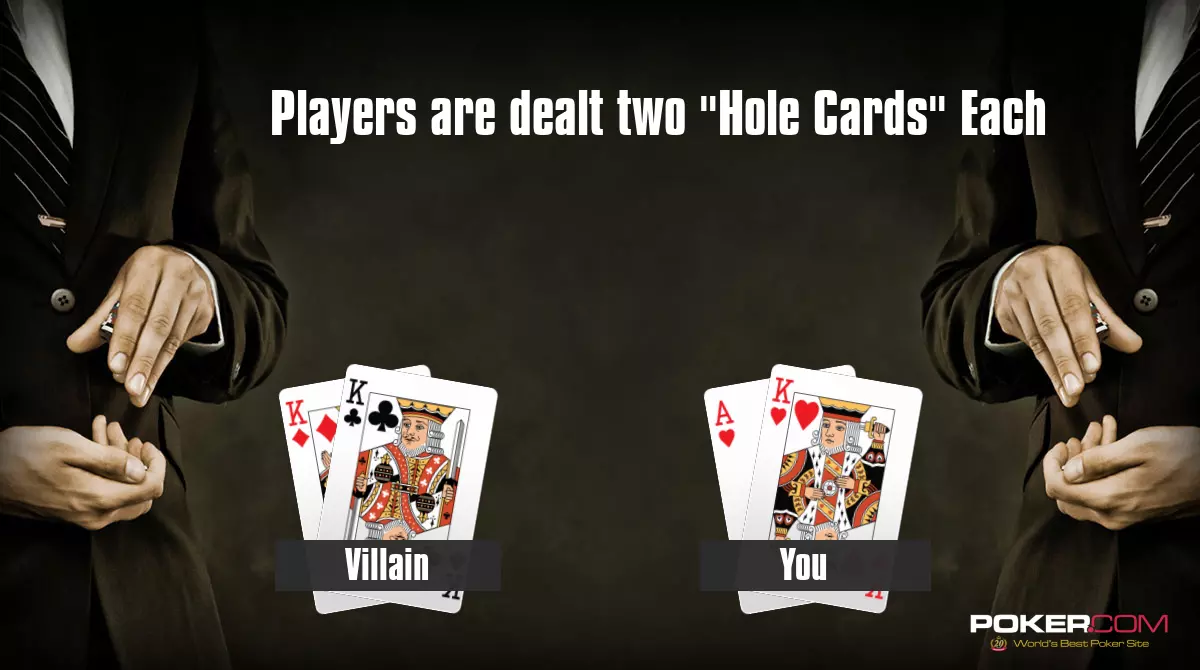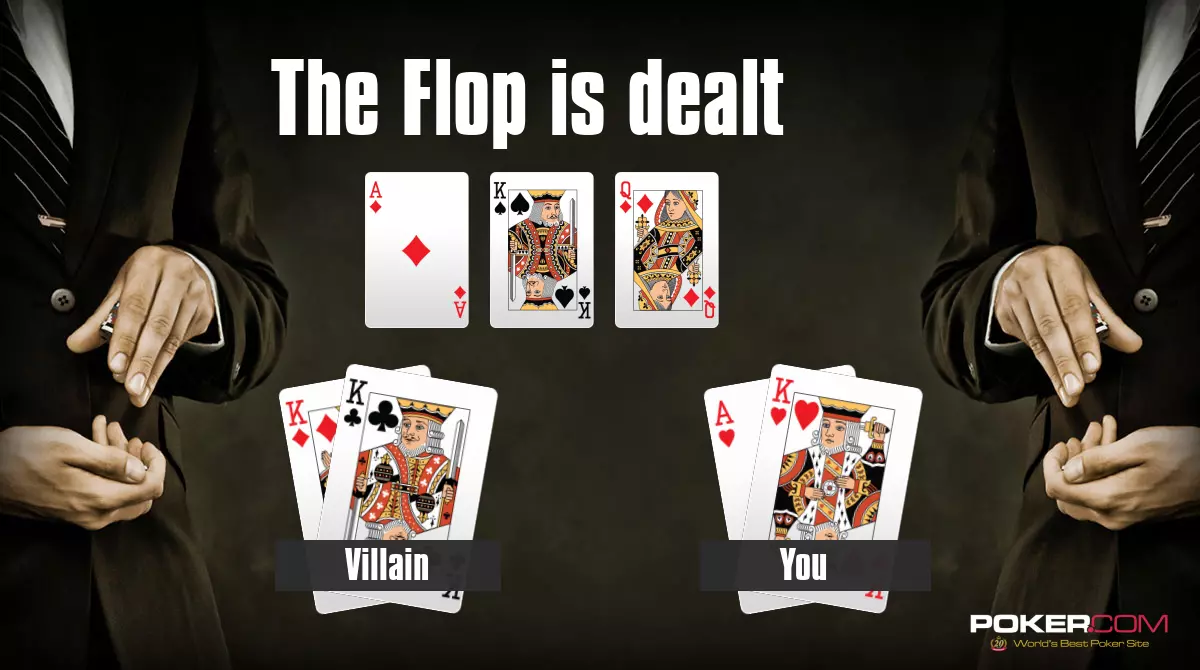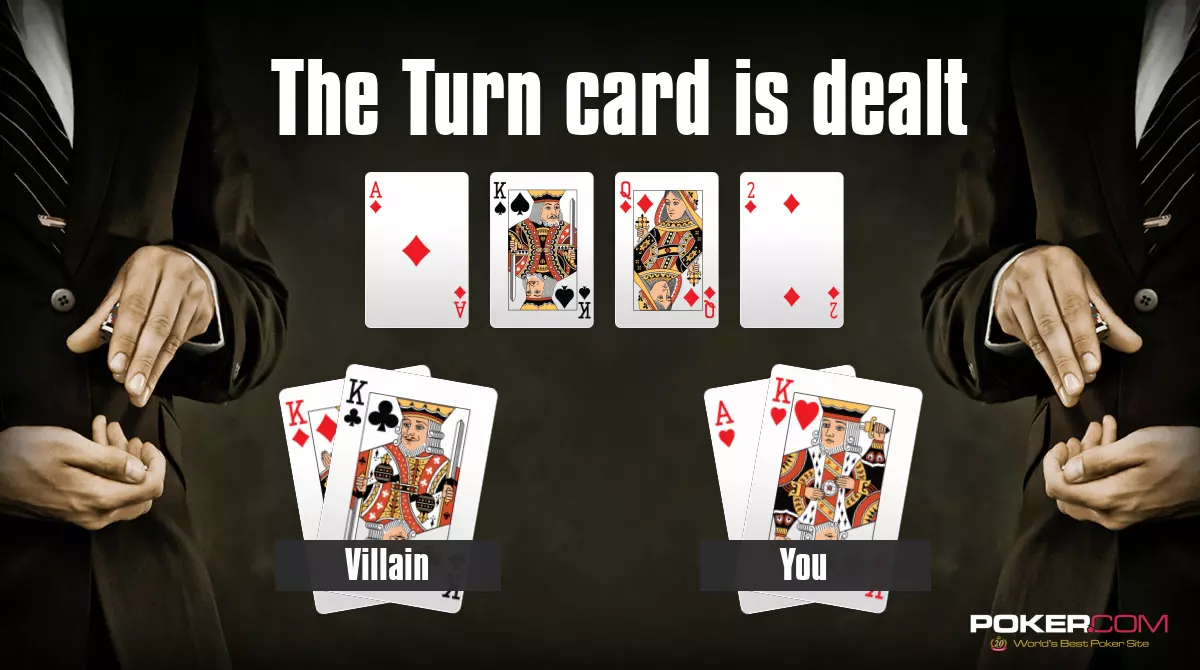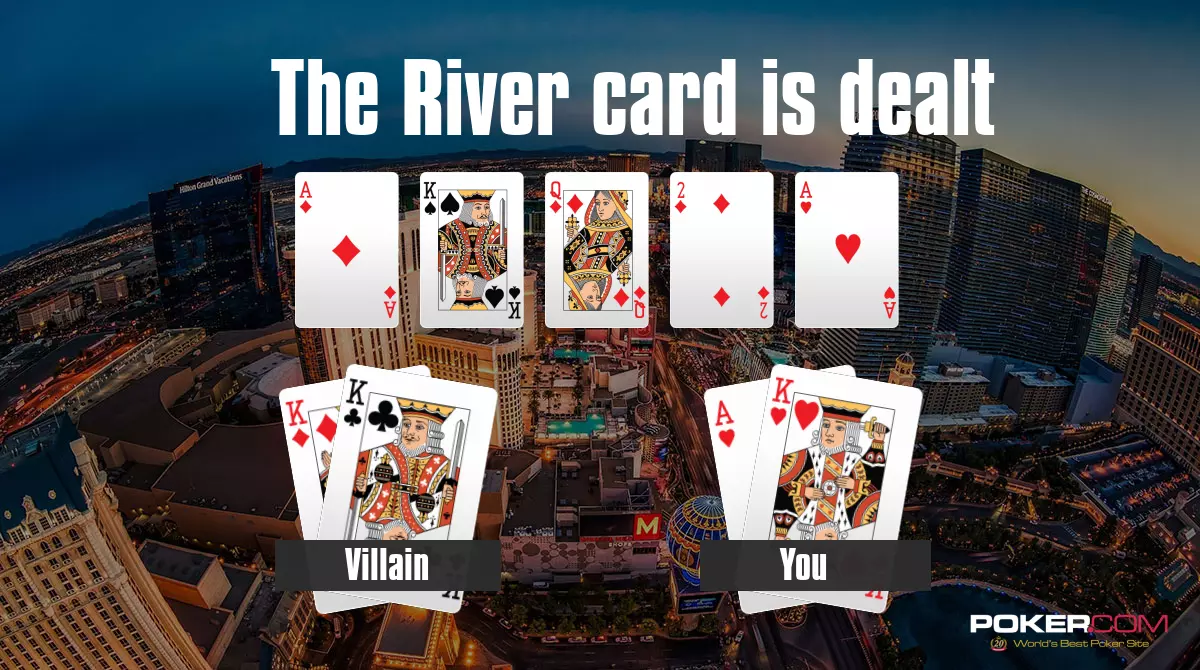1. Pre-Flop
Two cards are dealt face down to each player.
Before or while they are being dealt, the player to the dealer’s left makes the pre-determined “small blind” bet. This is immediately followed by the player to the left of the ‘small blind’ making the “big blind” bet.
The player to the left of the ‘big blind’ is the first to make a betting decision.
That player can see (match) the big blind and call, or they can raise (matching the big-blind and adding a larger bet to the pot – in one bet), or they can fold their hand, leaving the hand to play out among the other players in the hand.
When the betting round reaches the small blind, it must be noted that that player has already invested a sum of money into this betting round. Technically, it was the small blind that opened this betting round by making the initial (albeit, blind) bet. Whatever the amount of the betting round when it reaches the small blind, the amount of the small blind bet is what that player has already invested into this betting round.
The same goes for the big blind. If nobody bumps the bet after the big blind, then the big blind owes nothing, as this was the player that made the last bet. It must be noted, however, that contrary to regular poker betting, if nobody bumps the bet after the big blind, the big blind owes nothing BUT is still allowed the option to bump the betting round when it reaches him or her. If the big blind declines from placing a bet, then the betting round is over, and we proceed to the flop.
On the Flop, Turn, and River, the last player to act is always the Button.
Accordingly, on a 6-handed table, the post-flop order of play would be the Small-Blind opens the action, followed by the Big-blind, Under the Gun (UTG), then Hijack , Cut-off, then Button.
2. The Flop
The dealer will “burn” (remove) a card from the deck, and then deal the next three cards from the deck face up in the center of the table. The cards on the table are “community cards” and can be used by all players in conjunction with the cards in their own hand (hole-cards).
On the flop, the small-blind is first to act, / open the betting round, which proceeds as a regular poker betting round, with each player having the options to open call (matching the big-blind amount), fold, or raise.
3. The Turn
The dealer will burn one card from the deck as before, then the top card from the deck is flipped face up in the center of the table as the fourth community card.
The player left of the big-blind opens a third betting round, which proceeds as a regular betting round. Once the betting action has finished and players have made their decisions, it’s time to deal the last card (“the river card”) in the poker hand and have one final round of betting.
4. The River
A card is burned from the deck, and the top card from the deck is flipped face up in the center of the table as the fifth and final community card.
The small blind opens the betting for a fourth and final betting round, which proceeds as a regular betting round.
After this betting round, players remaining in the hand showdown their hands to make their best five card hands using the two cards in their hand and the five community cards in the center of the table.
If you’re not sure about hand strength / which hands beat which, you can refer to our standard poker hand rankings below. Remember you can use one card, or two cards from your hand in conjunction with any three or four cards on the table – or you can “play the board” – for your hand, using no cards from your hand.
Poker Hand Rankings

Royal Flush:
Five card sequence from 10 to the Ace in the same suit (10,J,Q,K,A).

Straight Flush:
Any five card sequence in the same suit. (eg. 8,9,10,J,Q and A, 2,3,4,5 of same suit). All the cards are of the same suit, and all are consecutive. Ranking between straights is determined by the value of the high end of the straight.

Four of a Kind:
All four cards of the same index (eg. J,J,J,J).

Full House:
Three of a kind combined with a pair (eg. A,A,A,5,5). Ties on a full house are broken by the three of a kind, as you cannot have two equal sets of three of a kind in any single deck.

Flush:
Any five cards of the same suit, but not in sequence. Don’t be tricked into thinking that all five cards are the same color. The high card determines the winner if two or more people have a flush.

Straight:
Five cards in sequence, but not in the same suit. A straight cannot wrap, meaning it is not a straight if you have a Queen, King, Ace, Two, Three. The higher straight wins if two or more people have a straight. In case of straights that tie, the pot is split.

Three of a Kind:
Three cards of the same value. The highest set of three cards wins.

Two Pair:
Two seperate pairs (eg. 4,4,Q,Q). As usual the pair with the higher value is used to determine the winner of a tie.

Pair:
One pair of two equal value cards constitutes a pair.

High Card:
If no one has any of the above winning hands, the tie is determined by the highest value card in the hand. If the highest cards are a tie then the tie is broken by the second highest card. Suits are not used to break ties.
NEW! Download the Poker.com Winning Poker Hands PDF document. The file is perfect for printing and you can refer to it at your home game. You may also need Adobe Acrobat Reader.






